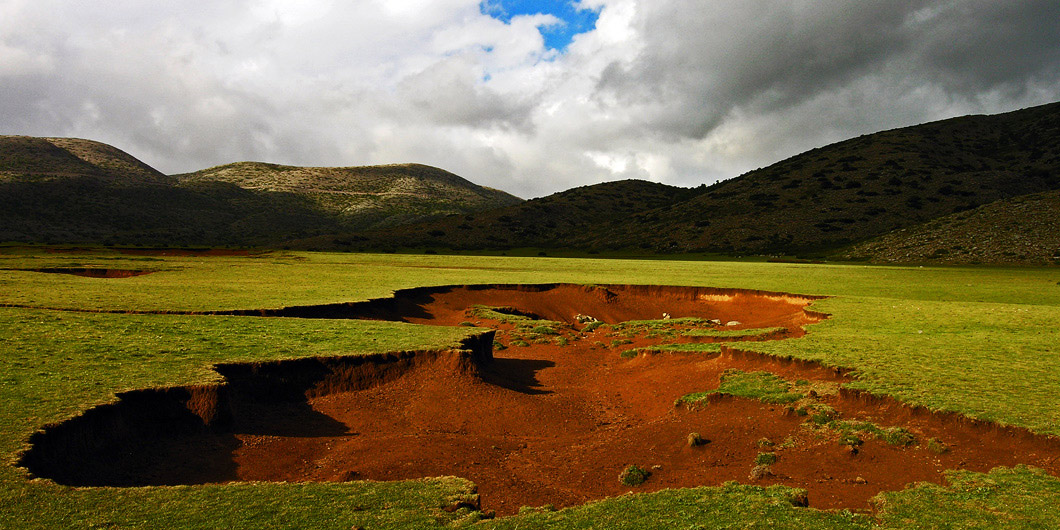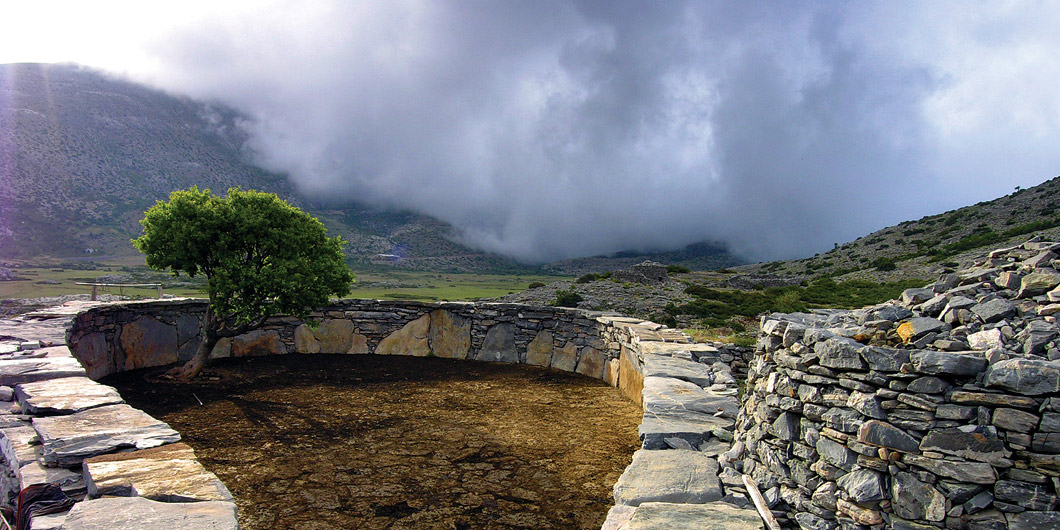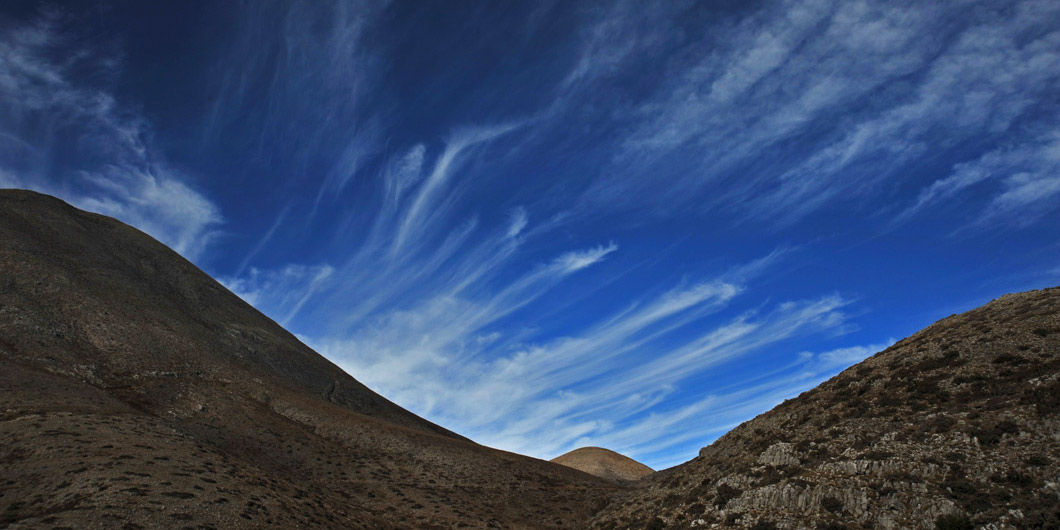The Ida range dominates the central portion of Crete, occupying a goodly part of the prefectures of Heraklion and Rethymnon, separating the West and East ends of the island. The highest peak is that of the Holy Cross (2456 m), where stands a small dry-stone church of that name. Elsewhere in the massif are 4 more peaks of over 2000 m height.
Generally speaking, Ida/Psiloritis presents a very wide variety of geomorphological features. The south and southwest slopes are steep and rich in gorges, caves, sinkholes and dolines (funnel-shaped holes in the limestone); the other flanks are gentler.

The lofty peaks are snow-covered in winter, but otherwise bare. The south sides are covered in various pines, cypress, maple and oak. Once for sure the mountain was covered in forest – its very name, Ida, means wooded mountain.
The ecosystem still has an important role and impact: here live upwards of 70 types of rare or endemic plants, let alone plenty of other uncommon and protected life-forms. A significant population of vultures, falcons, and golden eagles exists here, as well as the rare Cretan wild cat.
One of the most valuable ecosystems is that of the Forest of Rouva, on the south-east slopes.
Psiloritis is part of the Natura 2000 network, and also listed in the European and Global Geoparks.
Ida also played a key role in mythology. Here Rhea bore her son Zeus, who was raised by the Kouretes and Amalthia the goat in the Idean Cave.

As well as the excavations in the cave, another important archaeological site is that of Zominthos (at a height of 1200 m) where a Minoan building of status has been found in relatively good conditions.
Other points of interest are the mountain villages of Mylopotamos, with the regional capital at Anogeia, the cave of Sfendoni outside Zoniana and the gorge of Aghios Nikolaos (Rouvas). As for the peaks, they are accessible by hacked-out pathways, with the most important and well-marked being the E4, which cuts across the Nida plateau.
Today the inhabitants of Psiloritis make their living generally from stock-raising.

A particularly integral part of the Idean landscape are the mitata (round cheese-huts), stone-built, seasonal houses of the shepherds: they are scattered all over the Nida Plain.










